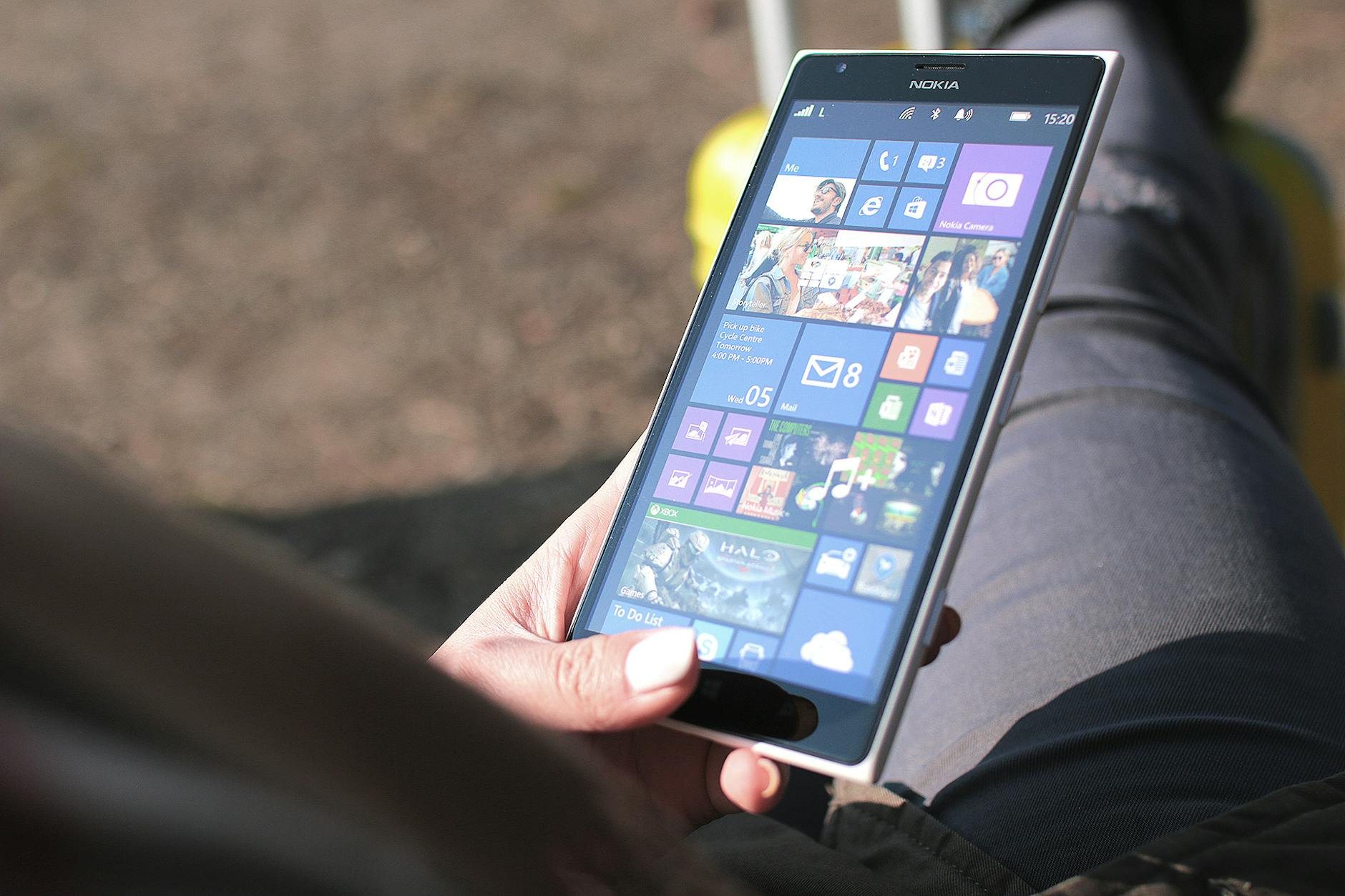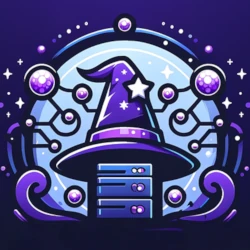October 14, 2025 marks the day Windows 10 will stop getting updates from Microsoft. After that, both home users and businesses won’t get any more security patches, bug fixes, or official help. Running an unsupported Windows leaves your PC at risk from new viruses, malware, and online threats.
Many users are now looking at their options before the deadline hits. While upgrading to Windows 11 might seem like the easy path, it’s not possible for older hardware. Linux stands out as a strong, practical choice—offering speed, security, and flexibility. If you’re ready to move beyond Windows, exploring Linux can open the door to a reliable and safe computing experience.
What Happens When Windows 10 Reaches End of Life?
 Photo by Tasso Mitsarakis
Photo by Tasso Mitsarakis
As Windows 10 draws closer to its end-of-life, many people are left wondering what happens next for their computers. Microsoft’s official support for Windows 10 will end on October 14, 2025. After that date, devices running Windows 10 won’t receive updates or official help from Microsoft. This situation sets off a chain reaction of risks that users can’t ignore.
Microsoft’s Official Support Policy
Microsoft follows a lifecycle policy that defines when each version of Windows receives updates and support. For Windows 10, this means:
- All support—including security fixes, technical help, and bug patches—stops after October 14, 2025.
- No new features or upgrades will be released for Windows 10.
- Only Windows 11 or newer versions will get fixes and improvements from Microsoft.
You can read more about these details in the official Windows 10 end-of-support announcement.
This isn’t a new approach; Microsoft has moved on from older versions before. But now it’s Windows 10’s turn—and the clock is ticking for millions of users.
Risks of Running an Unsupported System
Continuing to use Windows 10 after support ends brings several serious issues. Here are some of the problems you could face:
- Security vulnerabilities: Without updates, your PC becomes exposed to new viruses and hacks. Cybercriminals target old systems because they know security holes won’t be fixed anymore.
- Compatibility trouble: As software makers drop support for Windows 10, apps and devices may stop working or get buggy.
- Compliance risks: Businesses could break industry rules by using unsupported software, putting customer data and company reputation at risk.
- No official help: If you run into software problems, you can’t turn to Microsoft support for help.
For a deeper look at these risks, check this helpful guide on security and compliance dangers of unsupported operating systems.
Why the Urgency Is Growing
This looming “dead end” for Windows 10 means users need to act sooner rather than later. Big updates like these always spark a rush near deadline day. As the end-of-life date gets closer, pressure grows to seek a reliable alternative.
Sticking with unsupported Windows leaves your digital life exposed—your files, photos, and private data could be at stake. That’s why exploring another system, such as Linux, makes sense for anyone who wants peace of mind after 2025.
You can stay updated by reading Microsoft’s complete guide to Windows 10 end of support for all the official details as the date approaches.
Why Consider Linux: Key Benefits Over Windows 10
Linux isn’t just a “backup” for when Windows stops working. It’s a powerful, everyday operating system trusted by millions. Switching to Linux gives you more than simple survival after Windows 10’s end—it brings real upgrades in security, savings, control, and performance. Let’s break down how Linux stands apart where it counts most.
Enhanced Security and Privacy on Linux
Security is baked into the design of Linux. Its user permission model keeps your main files protected from threats by default. Unlike Windows, most Linux users don’t run into malware or ransomware problems in daily life. The reason? Criminals rarely target Linux because the system’s widespread code review and community oversight make it tough for threats to slip in unnoticed.
Other advantages include:
- Frequent security patches: Open-source developers and users catch and fix issues fast. Updates are delivered quickly, so you’re less likely to worry about old exploits.
- Antivirus rarely needed: Most people who use Linux don’t install an antivirus at all. This cuts down on system overhead and saves money.
- Privacy-focused by nature: Linux doesn’t track your activity or display ads baked into the system, unlike Windows.
You can read more about how Linux protects against cyber threats in this detailed review on Linux Security Features: Safeguarding Against Cyber Threats.
Cost Savings and Extended Hardware Life
Cost is a dealbreaker for many when choosing an operating system. Linux costs zero—no license fees, subscription costs, or sudden upgrade charges. You download, install, and run it at no extra charge.
But savings go even further:
- Keep your older computers running: Linux works better than Windows on aging hardware, turning “slow” machines into fast daily drivers. No need to buy a new PC unless you want to.
- Great for businesses and schools: Organizations can cut software licensing costs and delay hardware refresh cycles, freeing up budget for what matters.
- No hidden fees or upgrade nags: Linux keeps things transparent. Update when you want, not because an expensive upgrade deadline is looming.
For an overview of these financial upsides, see this article: Why Linux is more cost-effective than proprietary operating systems. A recent study found that many businesses can dramatically reduce their upgrade budgets and improve performance by switching to Linux, as detailed in Reduce Costs and Improve Business Performance with Linux.
Customizability and User Control
If you’re tired of software making choices for you, Linux is a breath of fresh air. The desktop, menu layout, color scheme—almost everything is up to you. Settings, visuals, applications, and even how updates are delivered can be tailored to your comfort.
Think about these benefits:
- Pick your look and feel: Choose a desktop style that matches your taste, from simple to fancy. You aren’t locked into a single appearance or theme.
- Install only what you need: No bloatware or forced apps. Pick the tools you use; skip the rest.
- Take charge of updates: With Linux, you’re in the driver’s seat. Updates don’t install without your say-so, and they rarely interrupt your flow.
All this is possible because Linux is open source. That openness means new ideas and features come from a worldwide community, not just one big company. As Red Hat outlines in The open source advantage: Your catalyst for agility, this collaborative approach brings real freedom, quality, and long-term stability.
With Linux, you call the shots—your computer works for you, not the other way around.
Beginner-Friendly Linux Distros for Ex-Windows Users
Moving from Windows to Linux doesn’t have to feel overwhelming. Many Linux distros are tailor-made for beginners—especially those used to the Windows experience. These options offer friendly interfaces, simple installers, and active communities. They’re designed to help you feel at home, not lost. Let’s look at a few of the most trusted choices and what makes each one a smart pick for ex-Windows users.
Ubuntu: The Reliable All-Rounder
Ubuntu has become almost a household name in the Linux world. It’s known for its clean look, predictable updates, and a huge online support network. When you install Ubuntu, you get a familiar desktop style—taskbar, icons, and apps right where you expect.
- Easy installation: Ubuntu’s installer walks you through every step. Even beginners can finish in less than 30 minutes.
- App availability: You’ll find software for everything—office work, web browsing, media, and even gaming.
- Community help: Stuck on something? Chances are, someone else has asked—and answered—the same question online. The Ubuntu forums and help pages are packed with useful guides.
The design, while a bit different from Windows, doesn’t feel alien. Toolbars, notifications, and window controls act in ways that make sense to new users. For many, Ubuntu is the “default” Linux for good reason. To see why it’s so popular, browse the full list of benefits on Best Linux distros for Windows users.
Linux Mint: Familiar and Friendly
Linux Mint is built with Windows users in mind. Its look and feel closely match Windows, down to the layout of the start menu and system tray. If you can use Windows 7 or 10, you’ll pick up Mint’s Cinnamon desktop in minutes.
- Gentle learning curve: Menus and shortcuts work like you expect. You don’t have to relearn where everything is.
- Stability and speed: Mint is famous for running well on older hardware without sacrificing performance.
- Built-in extras: Files, music, and settings move over easily. Mint comes loaded with useful tools right out of the box.
Mint’s approach keeps things simple—no fluff, no confusion. Updates don’t get forced on you, and there’s rarely any need to open a terminal unless you want to. For more perspectives from actual users, check out this thread: Best distro for a Windows user?.
Zorin OS: The Closest Thing to Windows Yet
Zorin OS is often recommended for those who want a direct Windows replacement. Its look is close enough to Windows that many switchers barely notice a difference. Zorin’s menu, taskbar, and general feel help ease culture shock.
 Photo by JÉSHOOTS
Photo by JÉSHOOTS
- Custom start menu: Designed like the Windows menu, so navigation is natural.
- Install Windows apps: Zorin’s built-in tools let you run many Windows programs you already use.
- Upgrade path: Once you’re comfortable, you can make the interface more “Linux-like” at your own pace.
Zorin also targets speed and simplicity, running well on older PCs. Support options are strong, too—Zorin’s community and help docs are filled with tips and guides for new users. For a tech writer’s recent review, see ZDNet’s guide to the best Linux distro for beginners.
What to Expect When Switching
When you pick any of these distros, expect:
- Simple installers that don’t require lots of tech know-how.
- Desktop layouts that feel like Windows, not a big leap into the unknown.
- Access to guides, forums, and videos to help with anything you don’t know yet.
No distro is “one size fits all,” but Ubuntu, Mint, and Zorin are built to smooth out the transition. Many ex-Windows users land on one of these and stick for years. Trying one is low-risk, since you can test them “live” from a USB stick without wiping your computer.
Addressing Common Concerns and Migration Challenges
Switching from Windows 10 to Linux brings up a few big questions: “What about all my software?” and “How do I move my files?” It’s normal to be cautious about making a change, especially when years of work and favorite programs are at stake. Good news—there are solutions for nearly every snag. Let’s tackle these areas step by step so you know exactly what to expect.
Finding Alternatives to Popular Windows Apps on Linux
Moving to Linux doesn’t mean giving up essential tools. There are solid replacements for almost every must-have Windows program. Many alternatives come with features you’ll recognize, plus the benefit of being free and open-source.
Here’s a quick rundown of popular Windows programs and their best Linux counterparts:
- Office Suites
- Microsoft Office → LibreOffice, OnlyOffice, WPS Office
- Photo/Graphic Editing
- Adobe Photoshop → GIMP (powerful photo editor), Krita (for digital painting)
- PDF Tools
- Adobe Acrobat → Okular, Master PDF Editor, Xournal++
- Email Clients
- Microsoft Outlook → Thunderbird, Evolution
- Video Editing
- Adobe Premiere → Kdenlive, Shotcut, OpenShot
- Text Editors
- Notepad++ → VS Code, Gedit, Kate
- Media Playback
- Windows Media Player → VLC, MPV
For a broader list, check out the community-driven Linux alternatives for Windows applications or this detailed guide to Linux software equivalent to Windows software.
Sometimes you just need to run a unique Windows app. In those cases, compatibility layers help:
- Wine: Runs many Windows programs on Linux without a full Windows install.
- PlayOnLinux and Bottles: Make Wine easier to use with a clear interface.
- Steam Proton: Run thousands of Windows games right from the Steam store—just install, click, and play.
If you run into trouble, you’re not alone. Active forums like Linux Mint, Ubuntu, and Reddit have solutions for most app-compatibility questions. You’ll get step-by-step tips from users who’ve made the move before.
Transferring Files and Settings from Windows to Linux
Moving your files is a big step, but it doesn’t have to be stressful. A little planning goes a long way.
Here’s a simple approach:
- Back up your data.
- Use an external drive, USB stick, or cloud storage (like Google Drive or Dropbox).
- Copy all the essentials: Documents, Photos, Music, Videos, Desktop.
- Export app data if needed.
- For browser bookmarks, use export/import options.
- For email, back up your accounts and messages.
- Prepare your Linux system.
- Install the distro, then use the file manager to move your files into place.
Want a network method? You can connect your Linux and Windows PCs and transfer files directly. Tools like Samba or SFTP make the process simple. For examples and advice, see this practical thread on how to transfer files from Windows to Linux or this guide to fast file transfers between Windows and Linux over your network.
For more secure or command line options, tools like scp (Secure Copy Protocol) let you copy files safely over your network. A more technical walk-through can be found in Baeldung’s tutorial on transferring files from Windows to Linux.
By organizing your files and making backups first, you lower any risk and know all your important stuff will land safely on your new Linux system. Most distros have friendly guides to help with common settings like printer setup and connecting to Wi-Fi, making your switch as stress-free as possible.
 Photo by MART PRODUCTION
Photo by MART PRODUCTION
How to Get Started: Steps for a Smooth Transition to Linux
Ready to try Linux? Taking the leap from Windows to Linux is easier when you break it down into simple, hands-on steps. Think of it like learning to ride a bike—you won’t master it in one day, but you don’t need to become a tech expert to get rolling. Here’s a realistic, low-stress path to making sure your switch is as smooth as possible.
 Photo by Ann H
Photo by Ann H
1. Choose the Right Linux Distro for You
Not all Linux systems are the same. Some feel almost like Windows, while others are a bit different. As covered earlier, picks like Linux Mint and Ubuntu are perfect for beginners. If you want more advice on finding a fit, see this helpful review of the best Linux distros for beginners or browse honest opinions from real users in this Reddit discussion for Linux newcomers.
Before you decide, think about:
- How much do you want it to look and feel like Windows?
- Do you need support for older hardware?
- Are you looking for a “just works” experience or do you like tinkering?
You can easily try several distros to see what feels right—don’t worry if you change your mind.
2. Back Up Your Important Files
Before making any major changes, create a backup of your important data. Copy your photos, documents, and settings to an external hard drive or a cloud service (Google Drive, Dropbox, etc.). This way, your files stay safe even if something goes wrong.
A basic checklist for backup:
- Documents (word files, spreadsheets, projects)
- Photos, music, and videos
- Browser bookmarks and passwords (export if needed)
- App settings and contacts
Spending ten minutes here can save you hours or even days of worry down the road.
3. Test Linux Without Installing Using a Live USB
A great thing about Linux is you can try it out without making any changes to your computer. To do this:
- Download your chosen Linux distro’s ISO file.
- Use a tool like Rufus or balenaEtcher to put that ISO on a USB stick.
- Restart your computer and “boot” from the USB.
You’ll see the full Linux desktop right away. Use it to browse the web, check out settings, and get a feel for the system. If you’re not happy, shut down and remove the USB—your Windows setup stays untouched.
4. Take the Dual-Boot Route if You’re Not Ready to Leave Windows
If you want to keep Windows 10 for now, dual-booting lets you have both systems on the same PC. When you turn on your computer, you choose which one you want to use.
Quick overview of how to dual-boot:
- Shrink your Windows partition to make space for Linux.
- Boot from a Linux USB stick as explained above.
- During installation, pick the option to install Linux alongside Windows.
This is a great way to try Linux long-term, keeping Windows as a backup for specific needs. For a friendly, beginner-focused walkthrough, check out this active thread on how to dual-boot or read this detailed step-by-step guide to dual-booting Linux and Windows.
5. Find Ongoing Help and Support
Moving to Linux feels much easier when you know where to ask questions or look for tips. Most beginner-friendly distros have dedicated forums, a helpful community, and step-by-step guides.
Here are some places to start:
- Official forums for your chosen distro (like Ubuntu or Linux Mint)
- Linux subreddits such as r/linux4noobs and r/linuxquestions
- YouTube how-to videos for the exact distro and tasks you need
- Wiki pages and getting started guides (often linked from the distro’s homepage)
Many users find the Linux community more responsive than what they were used to with Windows.
Making the jump to Linux doesn’t mean going it alone. Plenty of others have made the change—most are happy to point you in the right direction if you get stuck. Having these support options at your fingertips means you’re rarely far from a solution.
By tackling your move in these hands-on steps, you’ll be up and running with Linux faster than you think. And if you ever want to walk things back, your Windows system—or your backup—will still be waiting for you.
Conclusion
Windows 10’s support clock is ticking. A switch to Linux can protect your privacy, speed up old computers, and keep your daily tasks headache-free—long after Microsoft calls it quits.
Linux is easy to try and even easier to keep. Its modern look, app choices, and solid security make it a smart next step, not a last resort. More users are joining friendly forums and sharing their wins, building a lively community that grows stronger every year.
Now is the right time to back up your stuff and test Linux for yourself. Your current PC could feel brand new again. If you found this guide helpful, please share your thoughts or success stories below. Thanks for reading—let’s make computing safer and simpler together.
